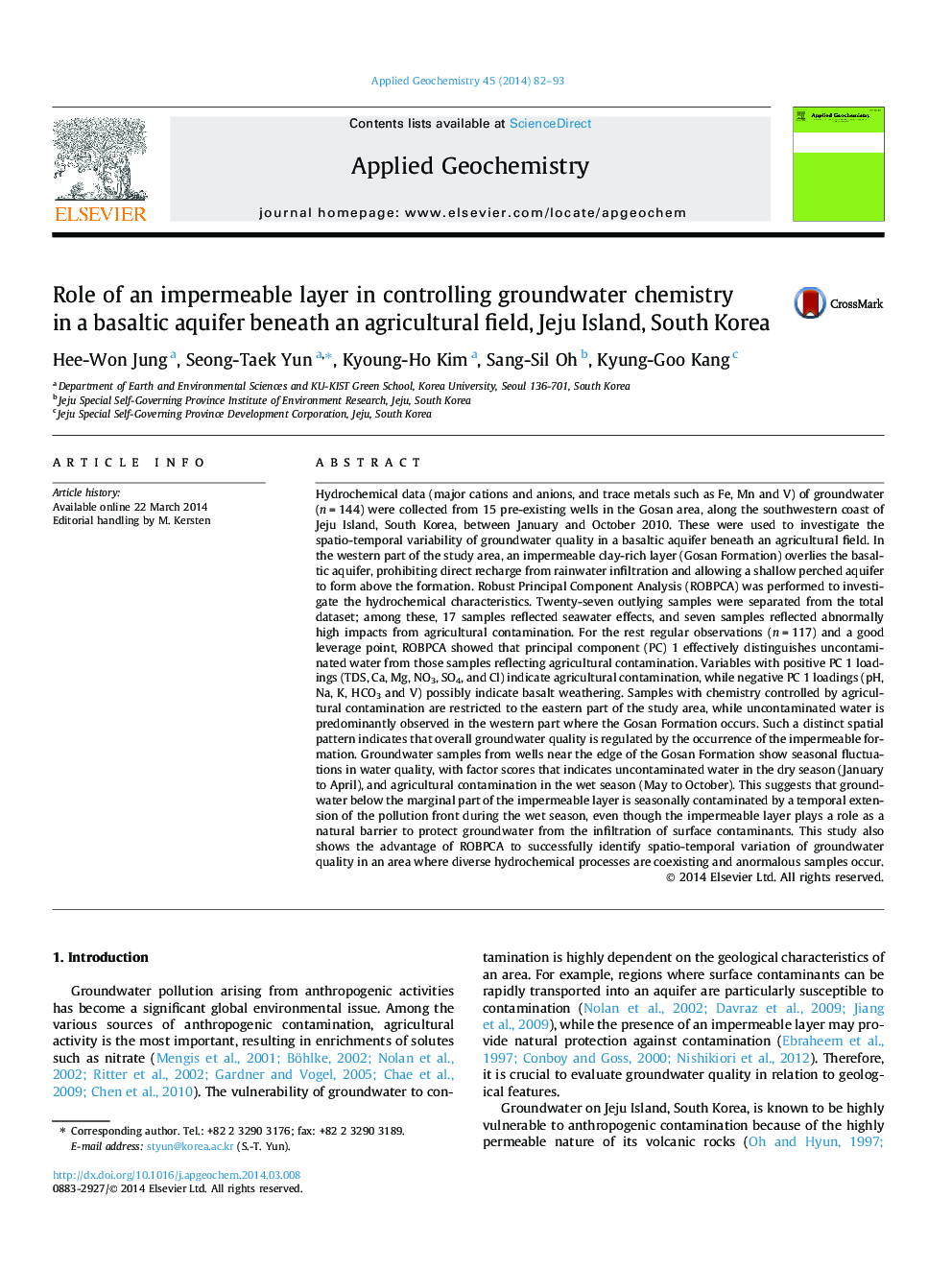| کد مقاله | کد نشریه | سال انتشار | مقاله انگلیسی | نسخه تمام متن |
|---|---|---|---|---|
| 4435835 | 1620246 | 2014 | 12 صفحه PDF | دانلود رایگان |
• We examined the spatio-temporal variation of groundwater quality in a basaltic aquifer.
• Robust Principal Component Analysis extracted outlier samples contributed from seawater incursion.
• Agricultural contamination and basalt weathering govern the groundwater composition.
• The impermeable formation greatly influences the groundwater quality.
Hydrochemical data (major cations and anions, and trace metals such as Fe, Mn and V) of groundwater (n = 144) were collected from 15 pre-existing wells in the Gosan area, along the southwestern coast of Jeju Island, South Korea, between January and October 2010. These were used to investigate the spatio-temporal variability of groundwater quality in a basaltic aquifer beneath an agricultural field. In the western part of the study area, an impermeable clay-rich layer (Gosan Formation) overlies the basaltic aquifer, prohibiting direct recharge from rainwater infiltration and allowing a shallow perched aquifer to form above the formation. Robust Principal Component Analysis (ROBPCA) was performed to investigate the hydrochemical characteristics. Twenty-seven outlying samples were separated from the total dataset; among these, 17 samples reflected seawater effects, and seven samples reflected abnormally high impacts from agricultural contamination. For the rest regular observations (n = 117) and a good leverage point, ROBPCA showed that principal component (PC) 1 effectively distinguishes uncontaminated water from those samples reflecting agricultural contamination. Variables with positive PC 1 loadings (TDS, Ca, Mg, NO3, SO4, and Cl) indicate agricultural contamination, while negative PC 1 loadings (pH, Na, K, HCO3 and V) possibly indicate basalt weathering. Samples with chemistry controlled by agricultural contamination are restricted to the eastern part of the study area, while uncontaminated water is predominantly observed in the western part where the Gosan Formation occurs. Such a distinct spatial pattern indicates that overall groundwater quality is regulated by the occurrence of the impermeable formation. Groundwater samples from wells near the edge of the Gosan Formation show seasonal fluctuations in water quality, with factor scores that indicates uncontaminated water in the dry season (January to April), and agricultural contamination in the wet season (May to October). This suggests that groundwater below the marginal part of the impermeable layer is seasonally contaminated by a temporal extension of the pollution front during the wet season, even though the impermeable layer plays a role as a natural barrier to protect groundwater from the infiltration of surface contaminants. This study also shows the advantage of ROBPCA to successfully identify spatio-temporal variation of groundwater quality in an area where diverse hydrochemical processes are coexisting and anormalous samples occur.
Journal: Applied Geochemistry - Volume 45, June 2014, Pages 82–93
